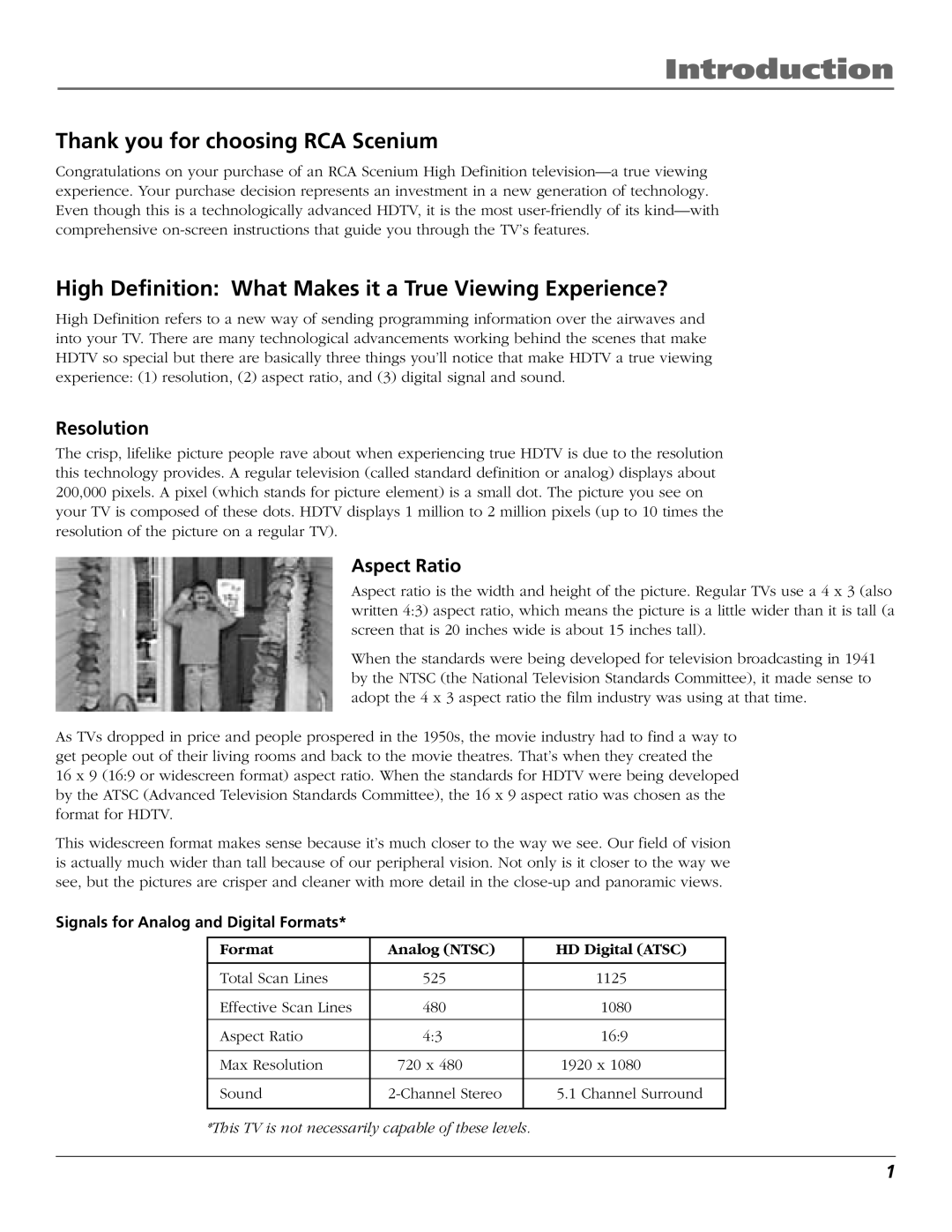
Introduction
Thank you for choosing RCA Scenium
Congratulations on your purchase of an RCA Scenium High Definition
High Definition: What Makes it a True Viewing Experience?
High Definition refers to a new way of sending programming information over the airwaves and into your TV. There are many technological advancements working behind the scenes that make HDTV so special but there are basically three things you’ll notice that make HDTV a true viewing experience: (1) resolution, (2) aspect ratio, and (3) digital signal and sound.
Resolution
The crisp, lifelike picture people rave about when experiencing true HDTV is due to the resolution this technology provides. A regular television (called standard definition or analog) displays about 200,000 pixels. A pixel (which stands for picture element) is a small dot. The picture you see on your TV is composed of these dots. HDTV displays 1 million to 2 million pixels (up to 10 times the resolution of the picture on a regular TV).
Aspect Ratio
Aspect ratio is the width and height of the picture. Regular TVs use a 4 x 3 (also written 4:3) aspect ratio, which means the picture is a little wider than it is tall (a screen that is 20 inches wide is about 15 inches tall).
When the standards were being developed for television broadcasting in 1941 by the NTSC (the National Television Standards Committee), it made sense to adopt the 4 x 3 aspect ratio the film industry was using at that time.
As TVs dropped in price and people prospered in the 1950s, the movie industry had to find a way to get people out of their living rooms and back to the movie theatres. That’s when they created the
16 x 9 (16:9 or widescreen format) aspect ratio. When the standards for HDTV were being developed by the ATSC (Advanced Television Standards Committee), the 16 x 9 aspect ratio was chosen as the format for HDTV.
This widescreen format makes sense because it’s much closer to the way we see. Our field of vision is actually much wider than tall because of our peripheral vision. Not only is it closer to the way we see, but the pictures are crisper and cleaner with more detail in the
Signals for Analog and Digital Formats*
Format | Analog (NTSC) | HD Digital (ATSC) |
|
|
|
Total Scan Lines | 525 | 1125 |
|
|
|
Effective Scan Lines | 480 | 1080 |
|
|
|
Aspect Ratio | 4:3 | 16:9 |
|
|
|
Max Resolution | 720 x 480 | 1920 x 1080 |
|
|
|
Sound | 5.1 Channel Surround | |
|
|
|
*This TV is not necessarily capable of these levels.
1
